Regular posts on all things around automated network & service management

Outside Contribution
Developments in the Fiber Optics and Telecommunications Industry in Germany
Increasing global connectivity through new technologies such as the Internet of Things (IoT) and 5G is generating growing demand for high-speed internet access and more reliable wireless networks. The expansion of the fiber optic infrastructure is of central importance for Germany’s digital transformation. The current expansion rate at the end of 2024 is 48.8%. The government, network operators and industry associations such as the German Broadband Association (BREKO) are actively committed to achieving a nationwide fiber coverage as fast as possible.
In view of the dynamic market developments and the advancing expansion of fiber optics, network service providers (NSPs) are faced with the complex organizational task of not only expanding and commissioning their physical infrastructure, but also ensuring a consistently high quality of service. To meet these requirements, NSPs need a comprehensive infrastructure management system that has the necessary flexibility to adapt to fluctuating conditions.
This blog post examines the dynamic changes in the telecommunications industry in Germany, analyses the resulting challenges for network service providers (NSPs) and outlines key solutions.
Industry Insight into the Fiber Optic Expansion in Germany
The German Broadband Association (BREKO) is the leading fiber optic association in Germany with more than 520 member companies. The association supports the competition in the German telecommunications market. Its members are clearly committed to future-proof fiber optics and are responsible for more than half of the expansion of fiber optic connections in Germany.
Daniel Seufert, Senior Manager Member Support and Development at BREKO, has agreed to give us an insight into the current dynamics of fiber optic expansion in Germany:
What role does fiber optic expansion play in Germany’s digitalization?
“Fiber optic networks are the lifelines of the digital transformation and the future-proof basis for innovative digitalization solutions for society and the economy. Compared to other connection technologies, fiber optics offers almost unlimited speeds that are constantly available at all times, lower susceptibility to faults and significantly lower energy consumption. The expansion of fiber optics also has a significant effect on economic growth in Germany.
In short: there is no alternative to the nationwide expansion of networks in order to maintain and expand Germany’s competitiveness and economic strength”
Where do you see the biggest challenges in the expansion of fiber optics in Germany? How can these challenges be overcome?
“In Germany, 24% of residential units, companies and public authorities had a fiber optic connection at the end of 2024. As many as 48% have fiber optics nearby, meaning that a connection can be implemented with relatively little effort. The figures show that there is still a long way to go before fiber optic is rolled out nationwide. The political expansion target of 2030 set by the preceding German government is no longer achievable. In order to achieve nationwide expansion as quickly as possible, we now need an economic policy geared towards investment-friendly framework conditions and fair competition.
It is clear that the expansion of the digital infrastructure must be a very high priority for the newxt federal government. Specifically, we need a concept for switching infrastructure from copper to fiber optics as quickly as possible and an end to the strategic dual expansion of fiber optic networks, which cannot be explained plausibly to any citizen. Working together through cooperation and open access instead of against each other is the magic formula.
We also need a law that finally reduces bureaucracy and simplifies and speeds up the lengthy approval procedures. In view of the current geopolitical situation, there must also be an even greater focus on protecting networks as critical infrastructure.”
What specific projects and initiatives has the association launched to drive forward the expansion of fiber optics?
“In order to make the infrastructure switch from copper to fiber optics competitive and consumer-friendly, BREKO presented a concept back in spring 2024 that got the political debate on this topic rolling. At the beginning of the year, we launched a dialogue platform to strengthen cooperation in fiber optic expansion. With this initiative, we want to encourage companies to exchange ideas with each other and support them in finding the right model for them. After all, the industry is too diverse for “one size fits all”. With our more than 25 employees, we also see ourselves as a competence center for our members.
The highlights of our service company include a variety of training courses, e.g. on open access, in-house networks or for site managers, an annual Summer School in cooperation with the Mannheim Business School and, of course, the fiberdays, the leading trade fair for fiber optic expansion and digitization, which teaks place next year from March 25th to 26th at Messe Frankfurt am Main.
BREKO is also active in the field of mobile communications. BREKO is the only telecommunications association in Germany to represent the interests of mobile service providers without their own mobile network.”
What is BREKO’s vision for fiber optic expansion in Germany?
“Fiber optic expansion is the DNA of BREKO with its more than 520 member companies. All relevant companies from the fiber optic sector and the telecommunications industry as a whole, with the exception of the former monopolist Telekom, are organized in BREKO.
Our goal is to support the member companies in their entrepreneurial development in the best possible way. This is also synonymous with the goal of implementing the nationwide fiber optic expansion as quickly as possible, since the majority of the expansion is carried out by BREKO members. To this end, we are campaigning for the best possible framework conditions in Berlin, Brussels, the federal states and at municipal level. However, it is not only the expansion that is important to us, but also fair competition and what services are provided on the new networks.”
Challenges of NSPs
Alongside the opportunities and benefits that the expansion of fiber optics brings, the ongoing digitalization is increasingly challenging NSPs. Not only the organizational and strategic planning and laying of the physical infrastructure can be challenging for network service providers, but also the commissioning and, above all, the long-term management and monitoring of network infrastructures.
Manual provisioning
Once the physical infrastructure has been successfully laid, an efficient process is needed to commission fiber optic and telecommunications networks. Manual activation and commissioning is not only time-consuming and cost-intensive, but also prone to errors. What NSPs need is an automated provisioning process that enables them to connect customers faster, activate services quicker and significantly increase overall operational flexibility.
Limited insight into network activities
Unrestricted insight into all network activities is essential for telecommunications networks. A zoo of management tools and a multitude of different technologies and providers often hinder a holistic view and make managing these networks a difficult challenge. NSPs need a management tool that is able to unite all network data from data traffic, network behavior and trends to resource and capacity consumption on one platform. This comprehensive overview makes it possible to maximize network performance, ensure service quality and create the basis for efficient fault and root cause management, which ultimately leads to higher customer satisfaction and lower operating costs.
Lack of fault and root cause analysis
Given the diverse and complex root causes for outages in telecommunications networks, comprehensive fault and root cause management is crucial. Without a systematic process for detecting, analyzing and resolving faults as well as identifying the underlying causes, NSPs risk the availability of their networks due to longer downtimes and disruptions and consequently the adherence to their service level agreements (SLAs). Holistic fault and root cause management is essential for the stability of NSPs and their long-term success, especially in critical infrastructures such as telecommunications networks.
Infosim® & BREKO – Shared Goals for Accelerating Digitalization in the Fiber Optic Industry
Infosim® has been an associate member of the German Broadband Communication Association (BREKO) for several years. “As an official partner of BREKO, we are pleased to be able to participate in the digitalization of Germany. Our membership not only gives us valuable market insights, but also the opportunity to exchange ideas and network with other partners from the industry,” says Udo Kopp, Director of Sales EMEA at Infosim®. “With our automated network and service management platform StableNet®, we offer a solution for telecommunications companies to face the challenges and dynamic market changes. We see ourselves as a partner to the telecommunications industry and want to support NSPs in implementing technological change and being prepared for the future.”
Zero-Touch Provisioning (ZTP)
The fully automated Zero-Touch Provisioning (ZTP) in StableNet® is an essential building block in the management of network infrastructures. ZTP gives network service providers an automated process for provisioning and commissioning new devices. Together with integrated discovery and configuration management, StableNet® provides a standardized workflow. This makes the rollout process not only more efficient, but also time and cost effective. For the service customer, this results in lower prices and faster provision.
Detailed network, service and traffic analysis
Complete network visibility is essential for understanding network behavior, monitoring performance and reacting to non-conformities. StableNet® provides a real-time view of the network health and a wide range of analysis and monitoring tools. Optimum network transparency is ensured by network forecasts and insights into the network and traffic utilization as well as alerts when individually defined threshold values are exceeded. StableNet® also supports multi-tenancy to distinguish between different user groups and views so that the provider can give its customers insight into the availability of their services.
Network capacity planning
StableNet®‘s capacity management provides an insight into the current utilization of all IT systems, the determination of future capacity requirements and the optimal and efficient planning of resources. This not only gives NSPs a valuable insight into the current status of the infrastructure, but also provides the basis for business decisions and investments. This insight also enables the NSP to make offers to its customers based on individual customer behavior and needs, for example to increase the capacity of a line if it is often fully utilized or to reduce it if the current capacity is rarely used.
Automated root cause and fault management
StableNet®’s automated fault management quickly and reliably detects and isolates faults in the network. The centralized root cause analysis helps to identify the cause of the problem and rectify the fault quickly and efficiently. Seamless integration with common trouble ticket and incident management systems provides the necessary documentation and transparency. This gives NSPs the opportunity to quickly inform anyone affected about the effects of the problem, the solution and the possible cause.
Intelligent SLA monitoring
From monitoring, error detection and automated configuration to performance monitoring and many more – as an automated all-in-one network management solution, StableNet® offers a holistic approach to monitor service level agreements (SLAs). Thanks to its vendor and technology independence, StableNet® offers the flexibility and scalability required to adapt to dynamic and complex network infrastructures. With StableNet® you can manage your entire network from a single platform. This gives you a detailed insight into compliance with your SLAs at all times, so that you can immediately intervene before any service losses or customer dissatisfaction occur. This monitoring and insight into SLA performance gives the NSP the opportunity to demonstrate compliance and identify potential problems at an early stage. On the other hand, it also gives the end customer control and security to ensure that the services received comply with the agreed SLAs.
AI/ML integration
The integration of modern Machine Learning (ML) and other Artificial Intelligence (AI)-based algorithms in StableNet® enables even more improved and smarter data utilization, from AI-enhanced capacity planning to network traffic forecasting and anomaly detection. Through Infosim®‘s continuous research in this area, the application and integration possibilities of these cutting-edge technologies are constantly being expanded.
Conclusion
StableNet® offers NSPs an all-in-one platform not only to meet the current challenges of fiber optic expansion, but also to be sustainably prepared for future developments. StableNet® is also available as a managed service solution. StableNet® as a Service (SNaaS) offers you cloud-based access to StableNet® without the burden of high initial investments. From Software-as-a-Service to License-as-a-Service to Platform-as-a-Service: Depending on your individual requirements and prerequisites, you can choose the SNaaS solution that best meets your needs.

Software
Made in Germany
